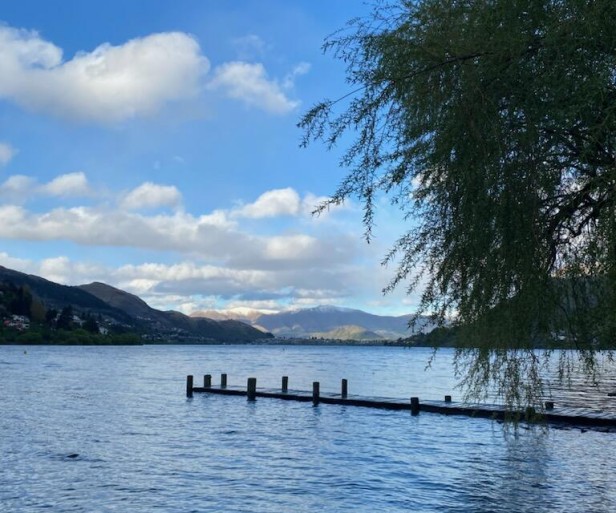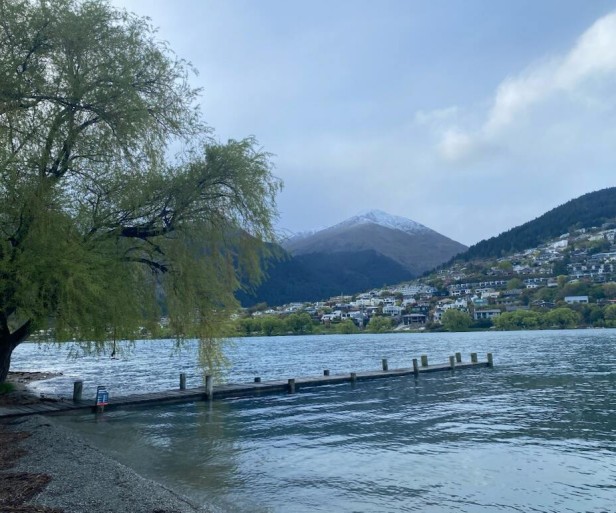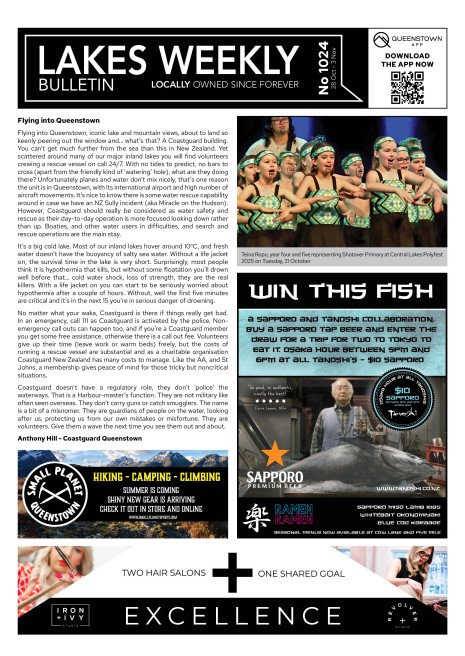Major South Island civil defence exercise to take place
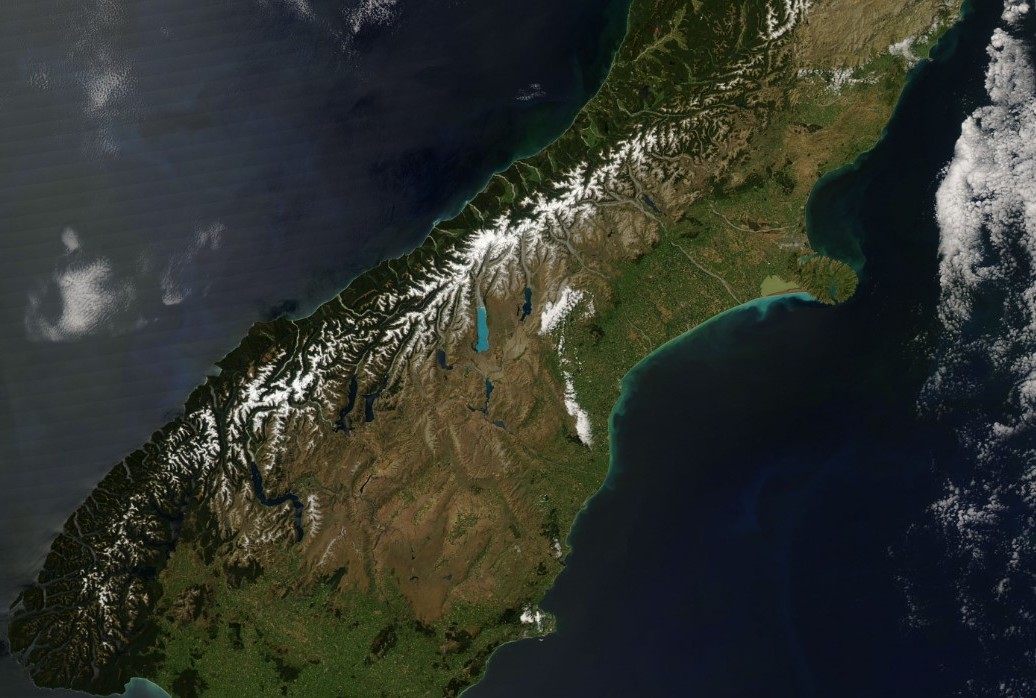
- Do you have emergency provisions for at least seven to ten days? Civil Defence needs you to know you could be on your own in the wake of a disaster.
- A major South Island civil defence exercise gets underway this week, with hundreds of people across three regions responding to the aftermath of a major Alpine Fault shake.
- Experts say the Alpine Fault is overdue a significant shake, of magnitude 8, which would release around 350 times more energy than the 2011 Christchurch quake.
The shaking, which lasts for nearly two minutes, finally stops.
The Alpine Fault has ruptured over 400km from Fiordland to Lewis Pass, nearly the length of the South Island.
The West Coast is completely cut off.
Power is out over much of the South Island, and even parts of the North Island.
Telecommunications are down.
Tens of thousands of visitors and residents - potentially more than 250,000 - are isolated in Queenstown Lakes, parts of Central Otago, the West Coast and Fiordland as roads and rail are damaged or impassable and air travel is suspended.
Health services and hospitals struggle to meet demand due to structural damage.
A train load of passengers on the Tranzalpine are trapped by landslides.
This scenario is nigh on inevitable - overdue by some accounts - and it is one that hundreds of civil defence experts, emergency and military personnel, utility workers and council staff from across the South Island will immerse themselves on Thursday.
While it is not possible to predict earthquakes, the AF8 (Alpine Fault magnitude 8) programme, a collaborative project of scientists, local and central government agencies and South Island civil defence and emergency management groups, has found a 75 percent probability of an Alpine Fault earthquake occurring in the next 50 years, and a more than 80 percent chance it will be magnitude 8 or more.
The project has examined 8000 years of geological records - one of the world's longest earthquake records - and know the fault has produced a large quake roughly every 300 years. The last one was in 1717.
A magnitude 8 earthquake on the Alpine Fault would release around 350 times more energy than 2011's magnitude 6.3 Christchurch earthquake.
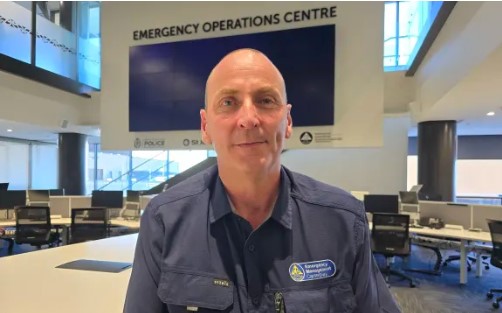
Phill Mackay, team leader, Regional Emergency Management Canterbury, who will lead the inter-regional civil defence exercise, Operation Pandora. Photo: RNZ / Keiller MacDuff
Former firefighter and Regional Emergency Management Canterbury team leader Phill Mackay will be leading the twelve hour exercise.
It is a huge operation involving hundreds of people over three regions and has taken months of preparation and planning.
Nine South Island councils, the Canterbury regional council and two dozen other agencies, including the defence force and lifeline providers like utility companies will be taking part. The "tabletop" exercise will be controlled from the Canterbury Civil Defence Emergency Management (CDEM) Group Emergency Operations Centre office, a purpose built operations room at the heart of Christchurch's Justice and Emergency Services Precinct.
The nation's civil defence exercise programme rotates through a four year cycle, from local councils doing local exercises, to regional exercises, to inter-regional events such as this one, involving Canterbury, Marlborough and West Coast civil defence emergency management groups all exercising together, to the fourth level, the national exercise.
When the National Emergency Management Agency (NEMA) held its own exercise, Rū Whenua, earlier this year, they used a nearly identical scenario.
While McKay is reluctant to put any potential numbers on the scale of destruction, Rū Whenua's scenario included three different stages, included one six weeks after the quake by which point more than 800 people had died, nearly 12,000 were injured and more than 27,000 people had been displaced.
The West Coast and Queenstown were still cut off from the State Highway network, leaving 40,000 people isolated, more than 1500 people without water, and several thousand still without power.
AF8's response framework, published in 2018, posits the South to North rupture as the maximum credible event, or MCE, a scenario that represents the most widespread and severe damage possible from an Alpine Fault rupture for the purposes of planning (though "more severe scenarios are also possible").
It warns of "highly compromised living conditions from days to months", landslides, rockfalls, liquefaction, damage to buildings, electricity, telecommunications, water, and roads. Other impacts included in the modelling are thousands of minor to moderate injuries, hundreds to thousands serious injuries, hundreds of people potentially trapped, and tens of thousands displaced. Food and fuel supplies will be disrupted, along with agriculture, tourism and industry.
AF8 research has thoroughly examined the potential impacts outcomes and vulnerabilities, factoring in hundreds of variables, providing an invaluable tool both for preparedness and for exercises like this one, known as Operation Pandora.
"That's the beauty of the work that's been done by the AF8 programme over the last seven to eight years - they've given us a realistic, science based scenario, so we can model some of the impacts and consequences. That's enabled us to build this exercise with really robust science and consequences," Mackay said.
Mackay said next week's regional exercise was very deliberately set three days after the quake to get past the initial chaos - "families won't know where each other are, workers may not want to come to work, communications and power most likely will be down" - and begin to structure the response.
"By day three we would be expecting to see support coming out of the North Island and from our international partners ...which is all managed at a national level."
Supply lines will be "challenged", power and communication lines will be lost. A lot of people will be trying to relocate themselves on broken roads, while international and domestic tourists could overwhelm airports.
The modelling is clear the West Coast won't have power, and while Canterbury's status is a little harder to know, "we should all be planning to be on our own for seven to ten days," Mackay said.
That planning frees Civil Defence up to focus on those who most need help, instead of those that are underprepared, he said.
But people can become complacent with their emergency supplies, or struggle to afford replacements.
"It doesn't have to be cupboards full of tinned food and two minute noodles, it could be just knowing where your important documents are, your insurance papers, passport, pet's vaccinations records. Know where your camping gear is. If your family is split up, how would you reconnect without internet? There are lots of little actions you can take to be a little bit more prepared."
Personal responsibility is at the core of Mackay's message, something made painfully clear during the aftermath of Cyclone Gabrielle and the North Island severe weather event.
"You've got to be responsible for your own actions and your own safety."
It becomes "very challenging, very quickly" when disasters strike across a large geographical area.
"That's going to be the message for Alpine Fault - and to be fair, we need to be saying it more often for a lot more events - is that potentially you will be on your own, because no one can come, sometimes they physically can't come to rescue you.
"Myself, my team, the civil defence and emergency management sector, can't make New Zealand resilient, we can't make [it] prepared - all we can do is educate people to make themselves prepared."




